Tucked away in the heart of the Peloponnese, just three hours from Athens, Dimitsana instantly pulled me in as soon as I turned that first cobblestone corner. This medieval village in Arcadia greets you with its sturdy stone houses, old-world architecture, and bell towers that feel like they’ve paused time.
But what really sets Dimitsana apart is how it weaves rich history and natural beauty together so effortlessly. From its hillside, you get jaw-dropping views of the Megalopolis plain and Mount Taygetus.
Last summer, as I wandered Dimitsana’s tight alleys, it felt like I’d slipped into another era. Every stone path seemed to whisper stories from Greece’s past, yet the village buzzed with enough modern life to make anyone feel welcome.
The open-air water-power museum absolutely stole the show for me. Locals here figured out how to turn nature’s force into power long before electricity became a thing.
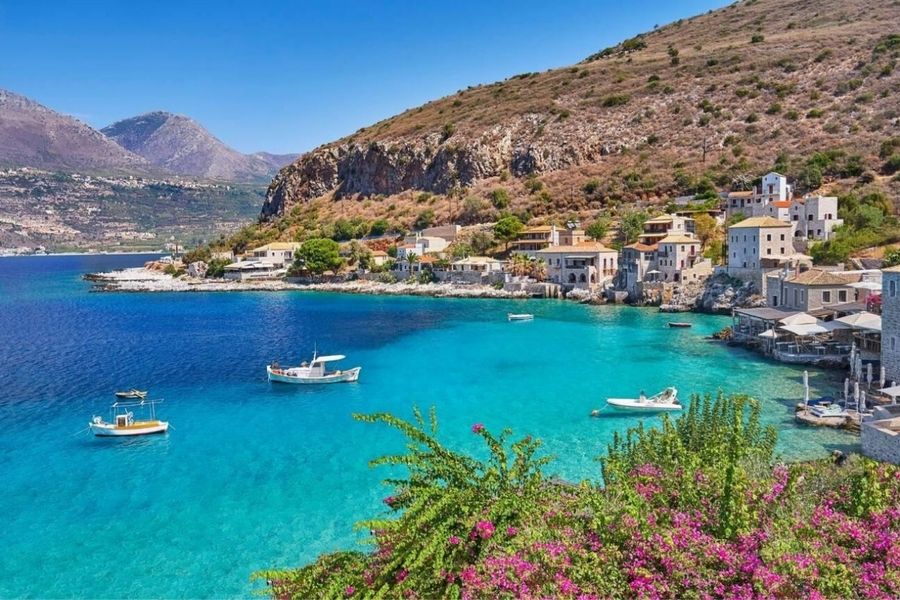
Three days in this village? Honestly, not enough. I lost track of time between the historic library, lazy hours in the square, and hiking those wild trails nearby. I kept stopping to snap photos—every corner looked like a postcard.
Dimitsana isn’t just another pretty Greek spot. It’s a place where ancient myth and history bump into daily life in the most magical, unexpected ways.
Discovering Dimitsana: The Heartbeat of Arcadian Stone Alleys
Up in the Peloponnese mountains, Dimitsana won me over with its medieval charm and those unforgettable stone walkways. This historic village sits at 950 meters above sea level, offering sweeping views and a real taste of Greece’s heritage.
Strolling Ancient Cobbled Paths
Walking Dimitsana’s streets is like stepping straight into the past. The winding cobblestone alleys thread through the village, each one echoing with stories from centuries ago.
My footsteps bounced off stones polished smooth by countless villagers and travelers. I loved early mornings best, when sunlight spilled through the narrow lanes between stone homes.
Hidden corners popped up everywhere—quiet squares with benches where locals gather, and surprise viewpoints over the lush valley. Some of the most charming paths climb up through the village. Sure, it takes a little effort, but the panoramic views at the top are worth every step.
Stone bridges cross gentle streams, making picture-perfect spots against the green mountain backdrop.
Traditional Architecture and Historic Charm
Dimitsana’s buildings really show off Greek mountain style. Stone houses with red-tiled roofs sit snug against the mountainside, creating a medieval landscape that’s barely changed in centuries.
Wooden balconies spill over with flowers, adding color to all that stone. I spotted little details—arched doors, tiny windows tucked in for shelter from storms or, maybe, invaders.
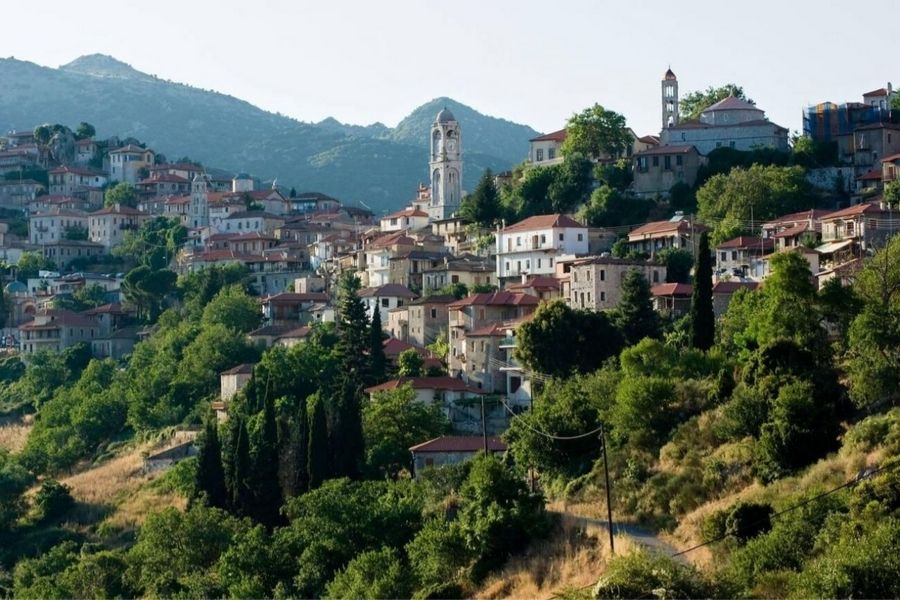
The village layout hugs the mountain’s curves. Buildings stack up in clever ways, making the most of space and showing off those incredible views. Some structures date back to the 1700s, and careful restoration keeps their old-world character alive.
Meeting the Locals: Stories and Smiles
Honestly, the people here bring Dimitsana to life. In a small café overlooking the valley, I met Dimitri. His family’s lived here for five generations. He poured me strong Greek coffee and shared tales of the village’s revolutionary past.
Shopkeepers greeted me with real warmth, sometimes offering tastes of local honey, herbs, or sweets. Many villagers speak enough English to share stories about local traditions and history.
One afternoon, I spotted an elderly woman weaving on her porch. We didn’t share much language, but her smile said plenty. She invited me to sit and showed me her craft. These little moments—when kindness bridges any gap—became my favorite memories of Dimitsana.
Water-Powered Legacy: Dimitsana’s Industrial Past
Dimitsana owes a lot to the wild waters of the Lousios River. The village once thrived as a water-powered industry hub, with nearly 100 facilities turning this resource into economic lifeblood and local pride.
Walking the Open-Air Water Power Museum
The Open-Air Water Power Museum quickly became my top spot. Set beside the Lousios River, this museum brings old-school technology to life right where it all happened.
I wandered through restored buildings, the sound of rushing water following me everywhere. The museum preserves several water-powered machines that once kept the local economy humming.
What blew me away was how efficiently the villagers built these systems to harness water power. Each building shows off a different piece of water tech, from basic irrigation to surprisingly complex machinery.
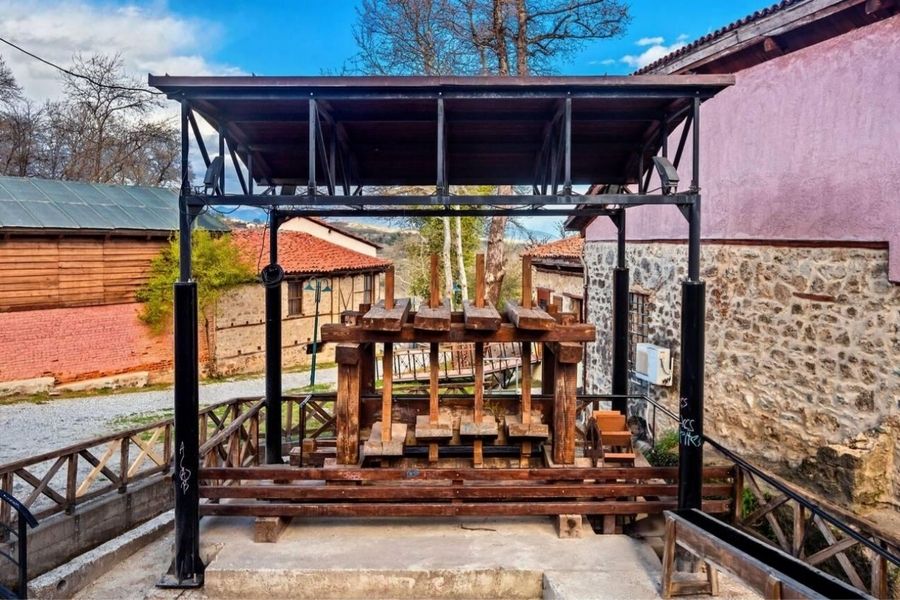
The self-guided tour lets you go at your own pace. Signs explain how each thing works, so you don’t need to be an engineer to get it.
Restored Mills and Flourishing Watermills
Down by the river, I found restored facilities that once powered Dimitsana’s daily life. The flour mills stood out, their grinding stones still in action during demonstrations.
The tannery showed how villagers used water-powered tools to process hides. The steady thumping of mallets must have echoed here for generations.
Some water mills pulled double duty, cleverly adapting to the changing needs of the village as seasons shifted. What really struck me? These systems ran entirely on renewable energy. Water wheels turned the river’s flow into mechanical power long before anyone wired up electricity.
The Art of Gunpowder: A Village at the Center of History
Dimitsana played a huge role in Greek revolutionary history as a gunpowder production center. The water-powered mills along the Lousios became crucial during the Greek War of Independence.
I learned that the village’s spot in the mountains was perfect for making gunpowder: flowing water for power, plenty of timber for charcoal, and a hidden location for safety.
At the restored gunpowder mill, I watched demonstrations of the risky process. Workers used wooden mallets to crush and mix sulfur, saltpeter, and charcoal into black powder.
The risk of explosions hung over every batch. Still, Dimitsana’s mills produced the supplies that helped Greece fight for its freedom from Ottoman rule.
This industrial heritage gives the village more than just good looks—it’s a symbol of Greek grit and cleverness at a turning point in history.
Immersive Experiences: Top Things To Do in Dimitsana
Dimitsana serves up the perfect mix of history, nature, and culture. The stone paths, water-powered past, and wild surroundings make for plenty of adventures.
Navigating Scenic Pathways and Hidden Corners
I spent hours roaming Dimitsana’s stone alleys, each twist revealing something new. The medieval village clings to the mountain at 950 meters, offering breathtaking views everywhere you look.
Don’t skip the seven post-Byzantine churches scattered around town. Each one has its own story and unique architecture. The town library, packed with rare old books, also deserves a visit.
The best way to explore? On foot. Early mornings, when sunlight hits the stone buildings just right, are pure magic. Locals often pointed me toward hidden spots you won’t find in any guidebook.
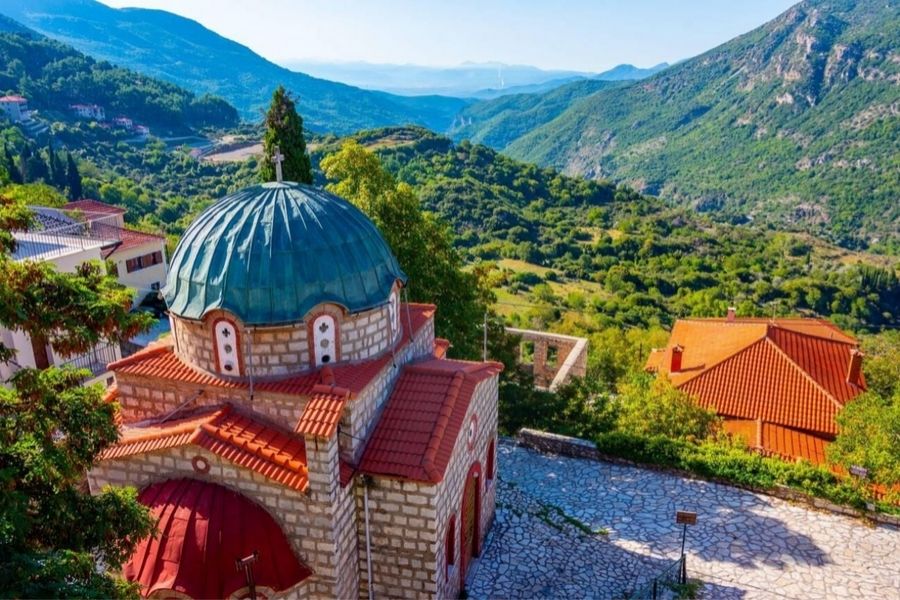
Tip: Wear comfy shoes! The cobblestones are lovely but can be tough on your feet.
Tasting Authentic Peloponnese Cuisine
The food in Dimitsana won me over just as much as the scenery. Local tavernas dish up Peloponnese classics with ingredients straight from nearby farms and forests.
Menus change with the seasons. When I visited, wild mushrooms and chestnuts showed up in hearty stews.
Must-Try Local Dishes:
- Hylopites (handmade pasta with local cheese)
- Kagianas (eggs with tomatoes)
- Mountain herb tea picked from local hills
- Local honey and spoon sweets
I skipped the touristy spots and went for family-run tavernas where grandmas still rule the kitchen. Portions are big, and the welcome is warmer than the fireplace crackling in the corner.
Chasing Waterfalls and Lousios Gorge Adventures
The wild landscape around Dimitsana offers real adventure for everyone. The Lousios River Gorge became my favorite playground.
Hiking the gorge led me to monasteries built right into the cliffs. The Prodromos and Philosophos Monasteries almost float above the rocks—how did they even build them there?
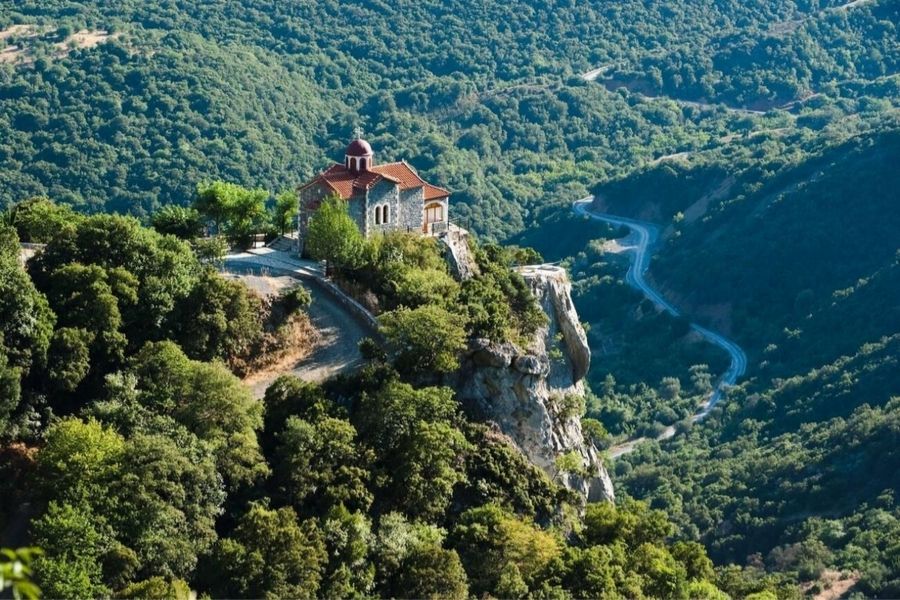
If you love water, try rafting on the Lousios River. Even as a beginner, I felt safe with the pro guides, and the views are unreal.
Don’t Miss:
- The Open-Air Water Power Museum with its old mills
- Ancient Gortys archaeological site at the gorge entrance
- Waterfall viewpoints along the trails
The sounds of rushing water and birds made the perfect soundtrack for my days outdoors.
Staying in Dimitsana: Boutique Guesthouses and Cozy Stays
Finding a place to stay in Dimitsana is part of the fun. The village offers spots that mix old stone charm with modern comforts, and the views are something else.
Stone-Built Inns and Mountain Views
Dimitsana’s hotels lean into the stone architecture, making rooms feel both authentic and a little bit fancy. En Dimitsani Guesthouse and Nerida Boutique Hotel really stand out, both just a short walk from the center.
The stone-built Nerida Boutique Hotel wowed me with its elegant rooms and sweeping views, only 300 meters from the heart of town. Each room has its own character—nothing cookie-cutter here.
For more privacy, I found a few stone villas for rent. One had magical views of the Peloponnese mountains—ideal if you’re craving peaceful moments away from the crowds.
Most places come with fireplaces, wooden ceilings, and balconies over the valley. Prices are fair, with good rooms starting around $73 a night.
Hospitality Highlights: Warmth That Wins You Over
What really makes Dimitsana’s stays special? The genuine Greek hospitality. Hotel owners often double as local guides, sharing secret trails and tavernas you won’t find in guidebooks.
At Amanites Guesthouse, the family treats you like a guest, not just a customer. Homemade breakfasts with local honey, yogurt, and herbs became the best part of my mornings.
Despotikon feels like a boutique gem, even though you’re in a tiny mountain village. The staff’s tips about hiking and the water museum saved me loads of time.

Other travelers mention the “real boutique experience” in their reviews—personal touches that big hotels just can’t match. That warmth, plus comfy rooms, makes for a stay that fits Dimitsana’s cozy vibe.
Planning Your Visit: Practical Tips and Local Insights
Dimitsana takes a little planning, but it’s worth it. I’ve pulled together the basics on timing, getting there, and local events to help you make the most of your trip.
Best Seasons To Wander the Stone Alleys
Spring (April-June) is hard to beat. Wildflowers explode across the mountains, and hiking trails call out to you.
Fall (September-October) brings a riot of color to the forests. The weather stays mild, and the crowds thin out.
Winter turns Dimitsana into a snow-dusted wonderland. Stone houses look straight out of a postcard, and some folks come just for the nearby Mainalo Ski Center.
Summer is busy, but the elevation keeps things comfortable. I found early mornings and evenings best for exploring the alleys—midday heat can sneak up on you.
Transportation and Getting Around
If you want the most flexibility for reaching Dimitsana, rent a car. The drive from Athens usually takes about 2.5 to 3 hours on the Corinth-Tripoli highway.
You’ll see that road signs are in good shape, but honestly, GPS makes mountain roads much easier to handle.
Public transportation? You’ve got a couple of options:
- Take the bus from Athens (Kifissos Station) to Tripoli.
- Then, catch a connection from Tripoli to Dimitsana, but keep in mind the schedule is pretty limited.
Once you’re in the village, you can get everywhere on foot. The stone alleys and steps aren’t exactly sneaker-friendly, so bring comfortable shoes!
If you want to check out the Open-Air Water Power Museum or the nearby villages, having your own car really helps.
You can find taxis, but it’s best to arrange one ahead of time—especially if you’re visiting during the quieter months.
Events and Festivities in Dimitsana
The Feast of Saint Nicholas on December 6th really stands out as Dimitsana’s biggest religious celebration. Locals fill the streets with traditional music, lively dances, and you’ll spot tavernas serving up special dishes just for the occasion.
Easter week brings a different mood. The village marks the days with solemn processions and ceremonies. I have to say, the midnight service feels especially moving—you’ll see candlelit processions winding through those old stone alleys.
Late October means the Chestnut Festival. People gather to celebrate the harvest with live music, dancing, and all sorts of chestnut-based treats. Local producers set up stalls, so you can pick up honey, herbs, and a bunch of other traditional goodies.

In the summer, the village square turns into a stage for cultural events. Local musicians and theater groups often perform there. You might want to ask at your accommodation about what’s happening, since these events rarely get much attention online.

